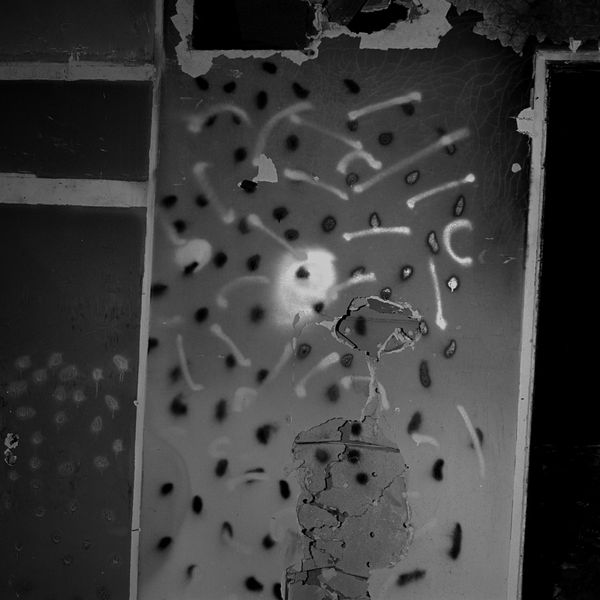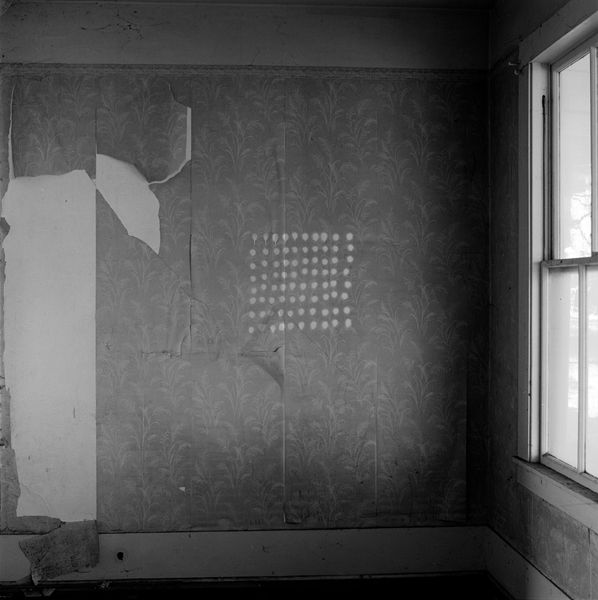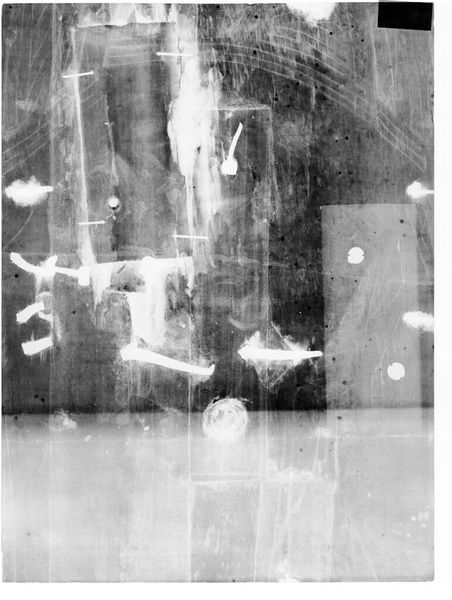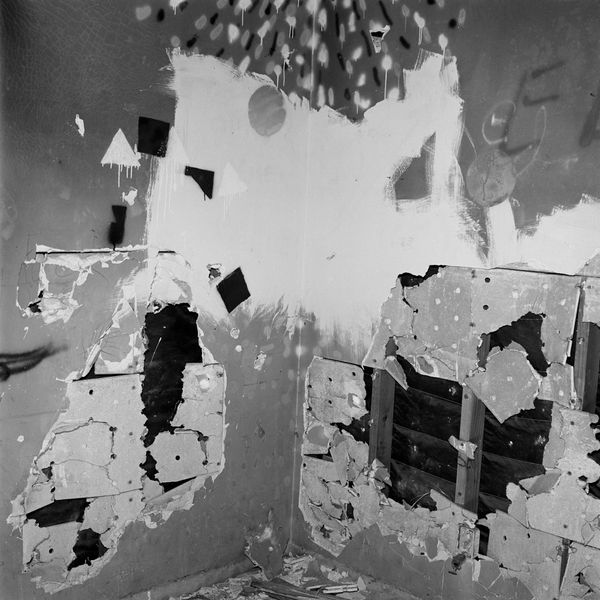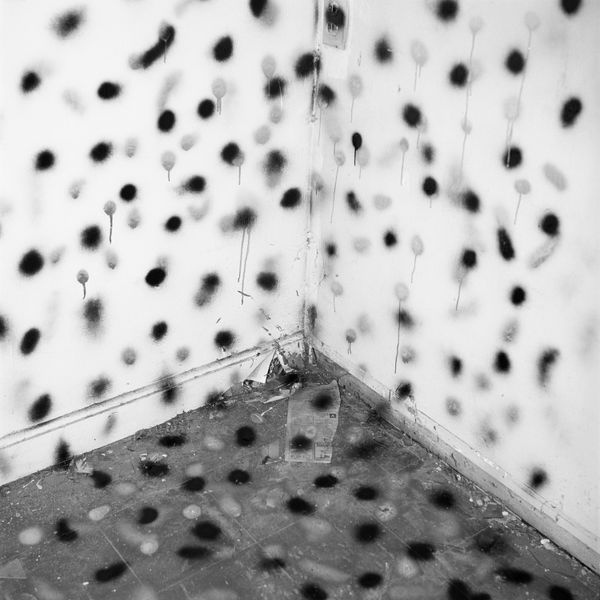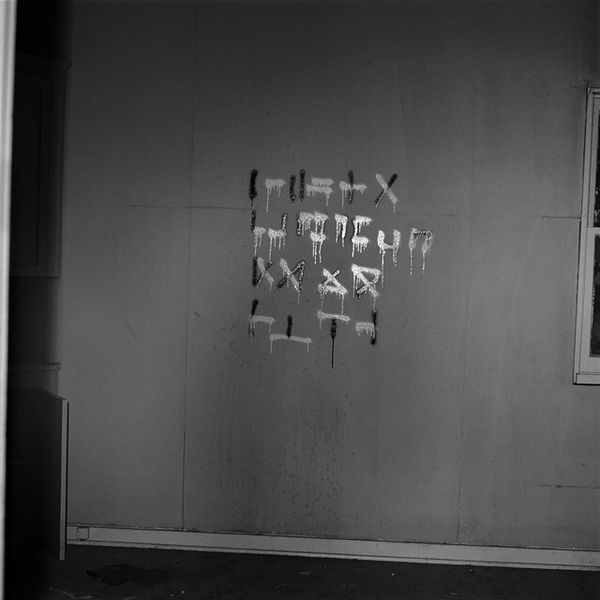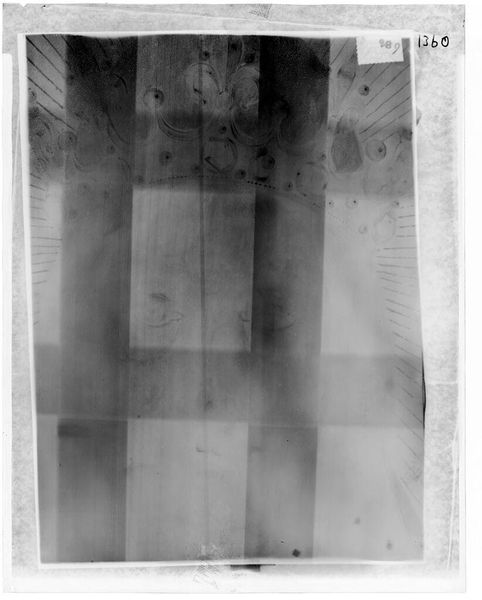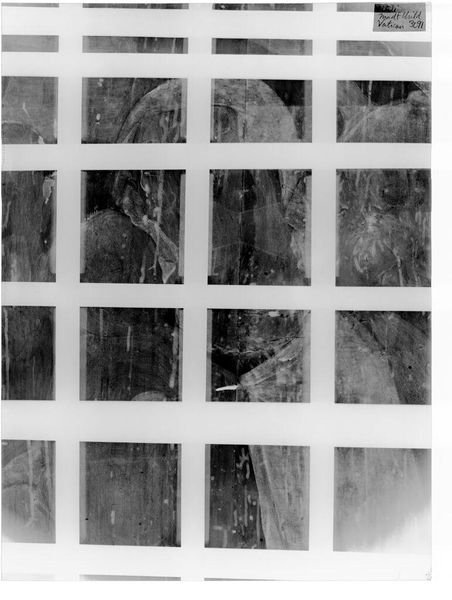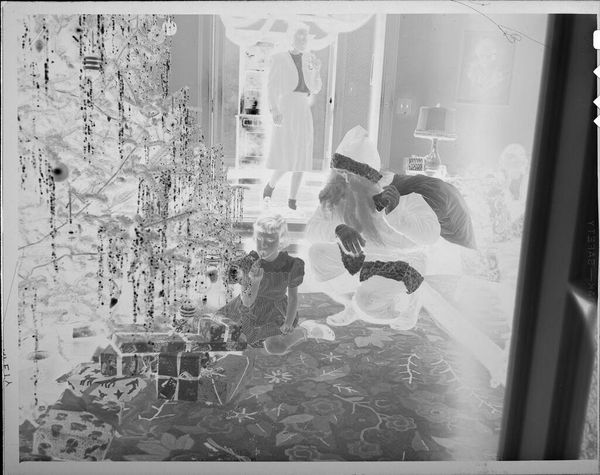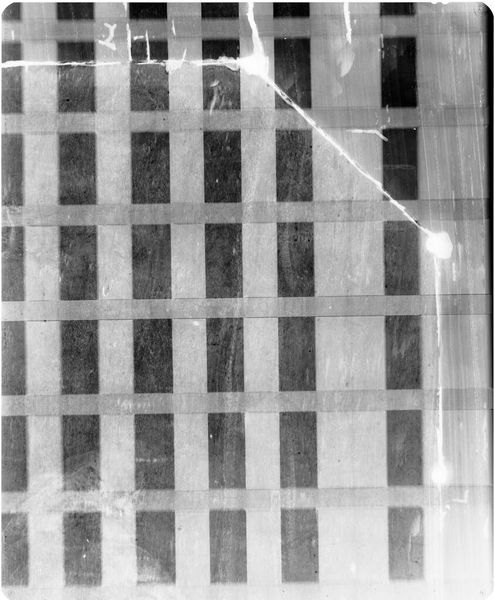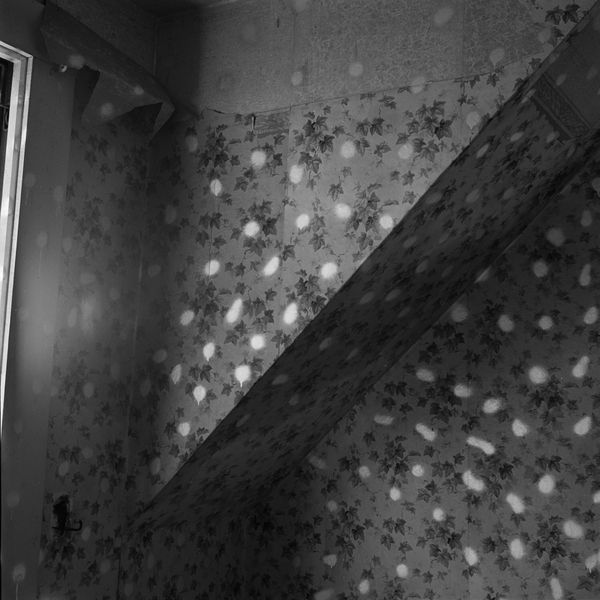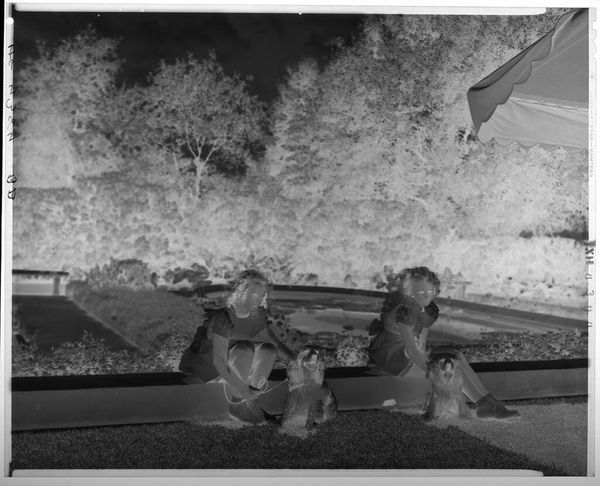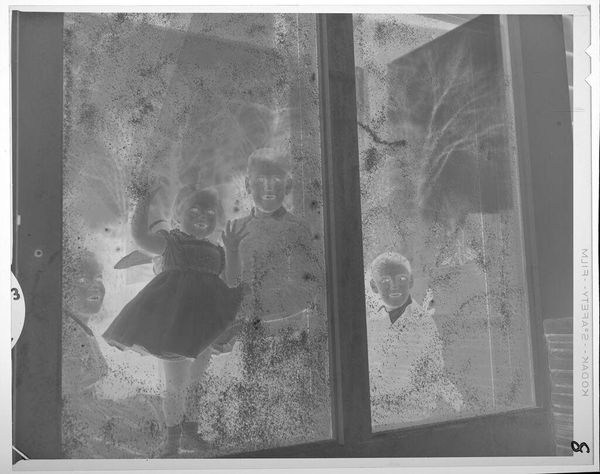
Dimensions: image: 34.93 × 34.93 cm (13 3/4 × 13 3/4 in.) mat: 62.23 × 59.69 cm (24 1/2 × 23 1/2 in.) framed: 64.14 × 61.6 × 3.81 cm (25 1/4 × 24 1/4 × 1 1/2 in.)
Copyright: National Gallery of Art: CC0 1.0
Curator: Standing before us is John Divola’s "74V34," an intriguing mixed-media piece believed to have been created sometime between 1973 and 1993. It deftly combines photography with installation art principles. Editor: First impression? It’s spooky, but cool. Like stumbling into some forgotten corner in a haunted… kindergarten? All those drips are slightly unsettling. Curator: The apparent decay is a crucial element. Divola frequently engages with marginalized spaces. Note how the site itself becomes integral to the artwork's meaning; this photograph captures an intervention in situ. The painted motifs, geometric in essence yet organic in their application, engage in a direct dialogue with the room’s pre-existing distressed state. Editor: Right, it feels almost performative, doesn’t it? Like Divola's having a conversation with this abandoned room using spray paint and light. Makes me think about appropriation—reclaiming space through…decoration? Curator: Precisely! It operates on multiple levels. We have the appropriation of the found space, obviously, and the almost vandalistic addition of marks, offset against the controlled placement of this gridded artwork within the frame, the artwork within the artwork so to speak. Editor: That central grid...it’s kind of hypnotic. Almost feels like each glowing droplet is whispering secrets. You know, secrets this room has seen. Does that sound too crazy? Curator: Not at all! Such emotive readings are quite valid, considering the open-ended nature of Divola’s oeuvre. The stark contrast – black and white – really drives home this sense of abandoned silence. Editor: Yeah, that monochrome palette feels important, right? It strips away the specifics, focuses our eye on form, light, shadow. There is no nostalgic colour to misdirect the attention. Curator: Indeed, without chromatic distractions, the composition, spatial relationships, and material contrasts are thrown into sharper relief, and are ultimately elevated. The abstract Expressionist influence peeks through. Editor: Okay, now I am noticing that wire trailing on the floor, and a glimpse through the window... This just keeps getting deeper, doesn't it? Curator: These components expand the photograph’s narrative far beyond initial perception and allow for consideration of its deeper context and composition. The decay is the message and Divola’s work allows the viewer to ask "why?" Editor: So, what I am taking away here is the photograph not only documents but actively becomes a part of this transient history, right? Amazing.
Comments
No comments
Be the first to comment and join the conversation on the ultimate creative platform.
